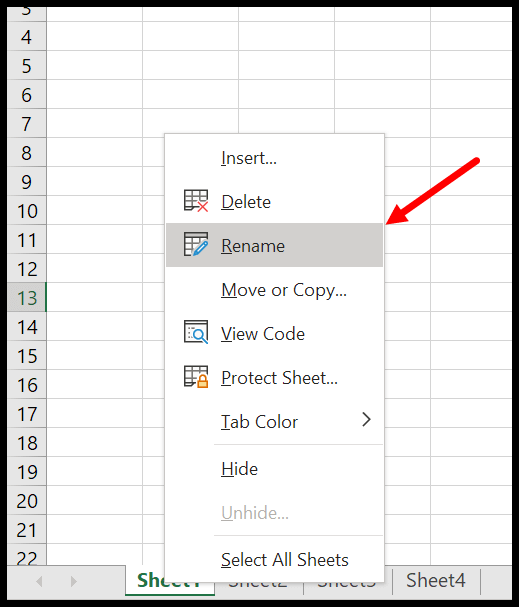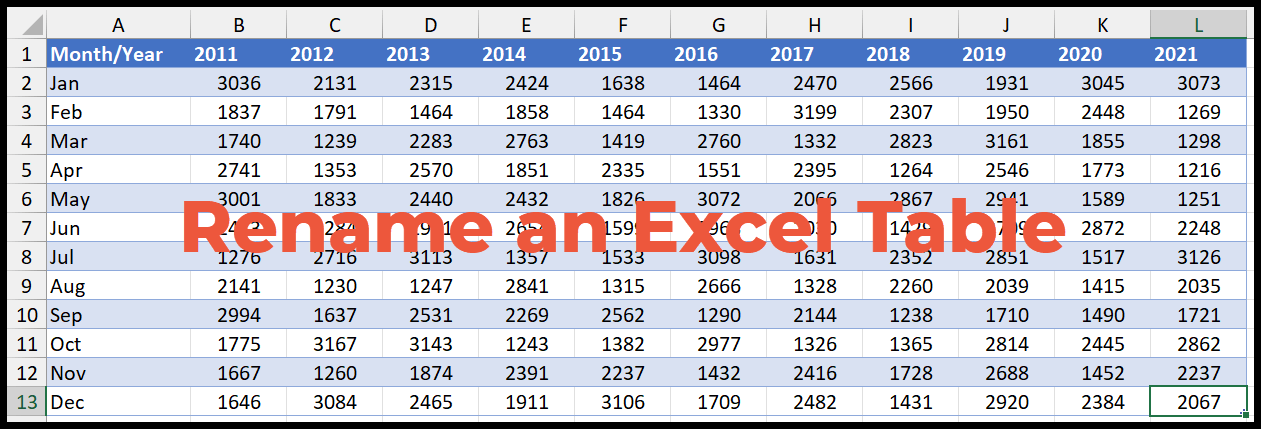5 Simple Tricks to Rename Columns in Excel

If you're working with Excel, you know that organizing and renaming columns can streamline your data analysis and make your spreadsheet much more manageable. Whether you're a beginner or an advanced user, mastering the art of renaming columns in Excel is essential. Here are five simple tricks that will make the process of renaming columns in Excel both efficient and error-free.
Using the Click-and-Drag Method

One of the most straightforward methods for renaming columns in Excel involves the click-and-drag technique. Here’s how to do it:
- Click on the letter of the column you wish to rename. This will highlight the entire column.
- With the mouse pointer over the column letter, click, hold, and drag the column to the desired position. As you release the mouse button, the column will be moved and automatically renamed according to its new position.
While this method is simple, it's not ideal for bulk renaming. Here are the steps:
The Right-Click Method

If you prefer a more direct approach, the right-click method is for you:
- Right-click the column header (the letter at the top).
- Choose Insert or Delete from the context menu to shift columns and thereby rename them.
This method can be less intuitive if you're not looking to change the structure of your spreadsheet, but it's effective when you need to rearrange column positions.
Using Excel Shortcuts

Keyboard enthusiasts will love this trick:
- To rename a column, select the column, press F2 or Alt+H, O, I to insert a new column, then type the desired name.
- Use Ctrl+Arrow keys to navigate quickly through columns for renaming.
💡 Note: These shortcuts work on both Windows and Mac, though the specific keys might differ slightly.
Utilizing Formulas

Sometimes, renaming columns is about more than just a label change; it’s about creating dynamic and informative headers. Here’s how you can use formulas to rename columns:
- In the first row of your intended column, enter a formula like
=A1&” “&B1to combine values from multiple cells. - If your headers depend on data in the sheet, use
=TEXT([column to convert], “Your Format”)to format the header dynamically.
| Old Column Name | Formula | New Column Name |
|---|---|---|
| A | =A1&” “&B1 | Combined Value |
| B | =TEXT(C1, “dd-mm-yy”) | Date |

Power Query for Advanced Renaming

For those who deal with large datasets or need more control over column renaming, Power Query in Excel can be a game-changer:
- Load your data into Power Query.
- Select the Transform tab, then choose Replace Values or Rename Columns to change column names. You can even use functions like
if-elsestatements for conditional renaming.
This method is particularly useful for data analysts who need to transform data in ways that simple renaming cannot achieve.
In conclusion, these five simple tricks to rename columns in Excel offer various approaches for different needs. Whether you're looking for a quick fix or a sophisticated data management solution, Excel provides versatile tools that can cater to your workflow. Understanding these methods not only improves your efficiency but also enriches your capability to handle and present data effectively.
Can I rename multiple columns at once?

+
Yes, using Power Query you can rename multiple columns at once by selecting the columns you wish to rename and using the Rename Columns option. This allows for bulk renaming with just a few clicks.
How do I undo a column rename?

+
You can use the ‘Undo’ function (Ctrl + Z) immediately after renaming. If you’ve made other changes or closed the file, you can manually change the column name back or revert to a previous version of the file if autosaved versions are available.
Will renaming columns affect my formulas?

+
Renaming columns does not affect formulas if you’ve used cell references like A1 or column references like [@Column1]. However, if your formulas directly reference column names by their text, they will need to be updated manually.
By employing these techniques, you’ll find that Excel’s flexibility allows you to quickly adapt your spreadsheets to meet your needs, enhancing both productivity and the clarity of your data presentation.



